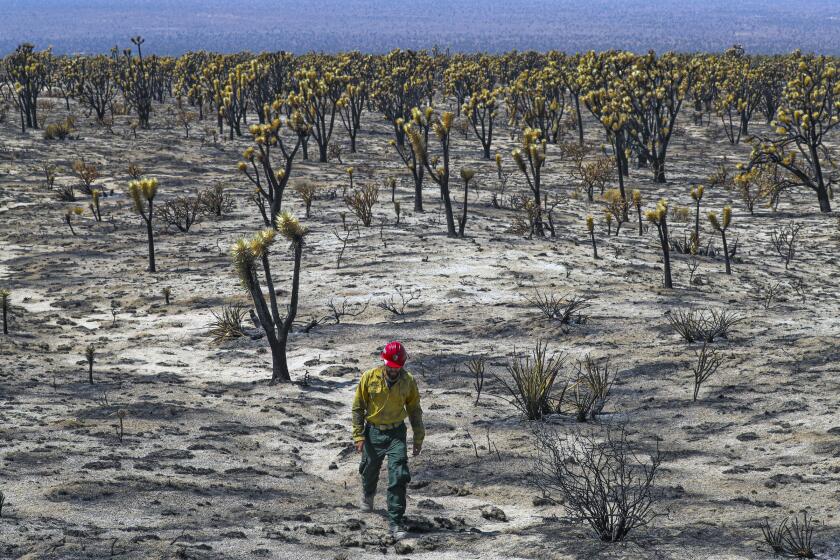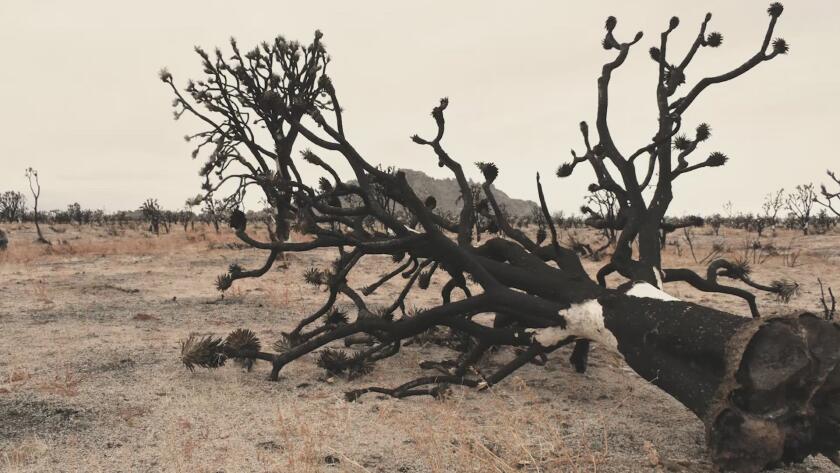Seedling by seedling, Joshua trees will rise again in fire-scorched desert
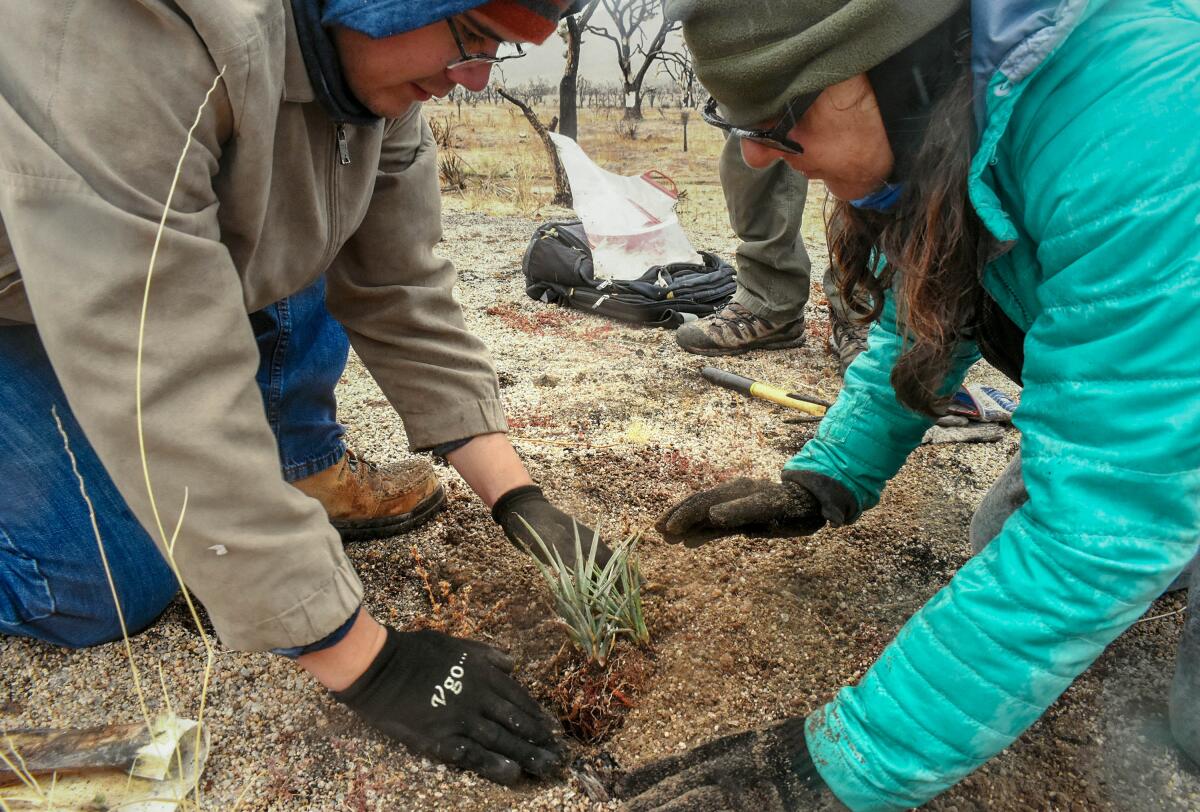
Joe Landeros plunged a shovel into the earth, poured water into the hole and carefully inserted a spiky green seedling.
Around him were icons of the California desert, felled by an enormous fire. Some of the Joshua trees were still standing but singed black. Some lay prone, their severed trunks like gaping wounds. Others had been reduced to piles of ash.
Two decades from now, if all goes well, the tiny bit of greenery will be a full-fledged Joshua tree, along with more than 1,500 that Landeros and other volunteers are planting.
“Well, I’m a geologist. Geologically speaking, that’s no time at all,” said Landeros, 28, of Long Beach, who planned to spend a week on the project.
Here atop the Cima Dome, some 5,700 feet above sea level in the Mojave National Preserve, a dense woodland of Joshua trees once stood.
In August 2020, a lightning-sparked fire tore through the area, burning more than 42,000 acres and killing about 1.3 million Joshua trees.
For the forest to rise again will require years of patience and a good amount of luck.
Climate change is leading to increasingly devastating fire seasons, and invasive grasses have crept in, making for perfect tinder.
Some seedlings are in a federally protected wilderness area, so they cannot be enclosed by fencing and could become a meal for jackrabbits.
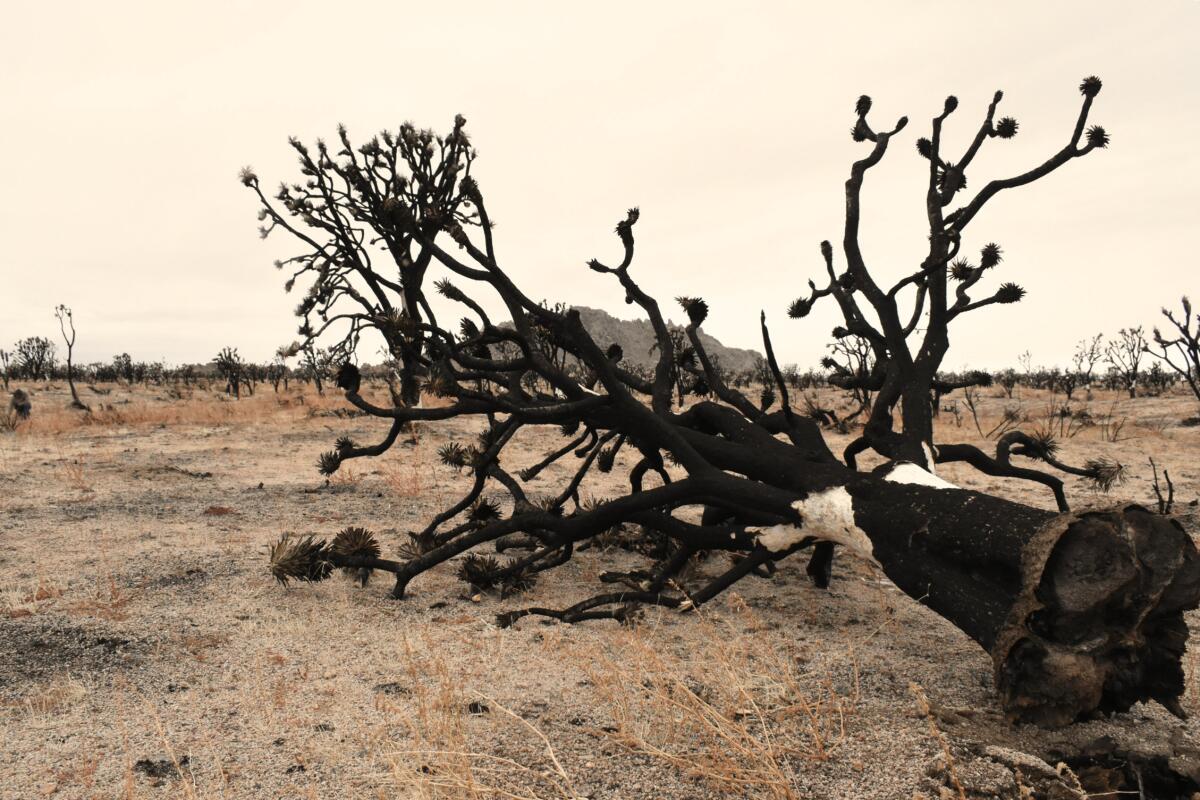
The growing seedlings will have one advantage. As the desert warms in coming years, Cima Dome’s high elevation will provide an ideal climate for them to flourish, scientists say.
Even if many survive, they will replace only a fraction of the destroyed trees. But for the volunteers, nurturing new life in the desert is a way for hope to triumph over grief.
“This really pulled on my heartstrings,” said firefighter Marc Sandoval from Rio Rancho, N.M., “As a firefighter, you don’t often get to be involved in the rehab after a fire. To see all the scorched trees, it’s really a lot to take in.”
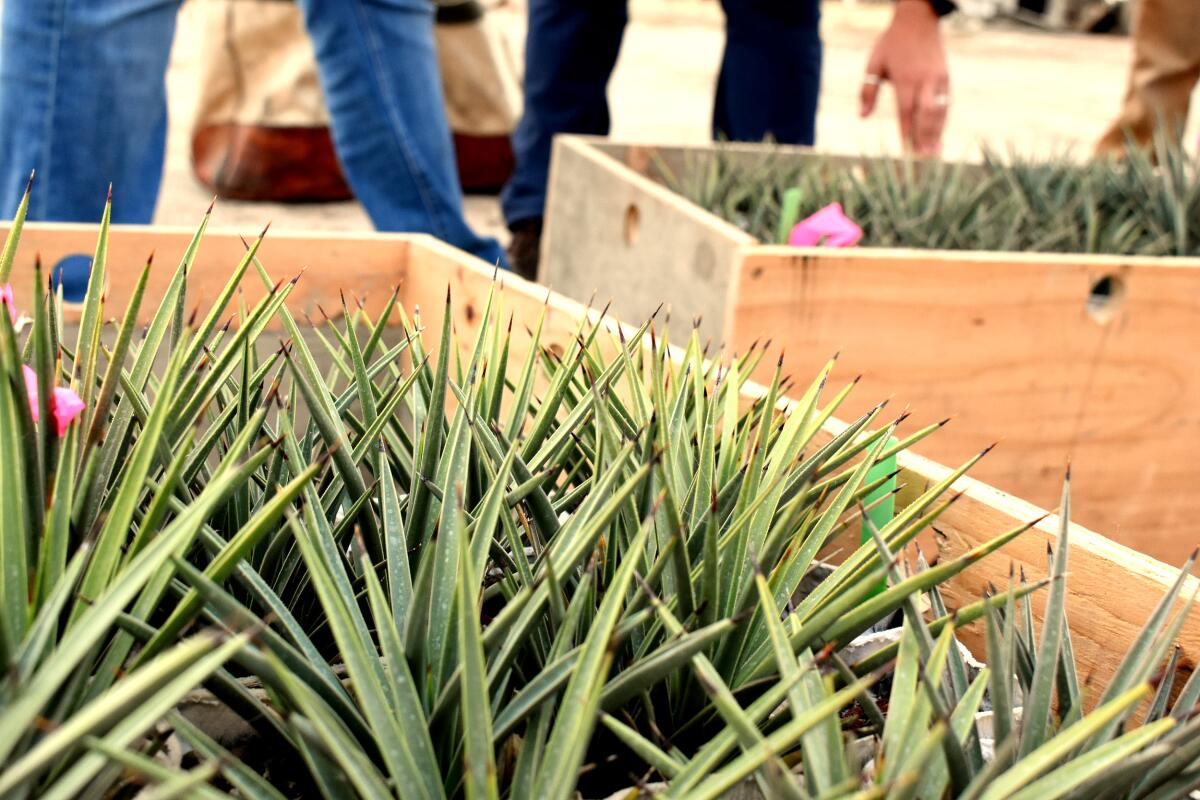
Outside the federal wilderness area, seedlings will be protected by chicken wire or placed near other plant species that create a hospitable environment.
The seedlings were originally being grown for a different project, said Drew Kaiser, the Mojave National Preserve’s botanist. After the fire, the focus shifted to repairing the devastation on Cima Dome.
More than 570 seedlings have gone into the ground this season, with the plantings to continue for three years.
“Pretty much before the Dome fire was contained, I was thinking about what we could do to help the area,” Kaiser said. “Then the Dome fire happened, and it accelerated everything.”
The Joshua trees on Cima Dome are the eastern variety, which grow mostly near the Nevada border and are not considered threatened, according to state and federal guidelines. But the majority of eastern Joshuas in California are federally protected because they are in a national preserve.
The western variety, which dominates elsewhere in California, is a candidate for threatened status under the California Endangered Species Act, due to climate change and human-caused habitat destruction.
A final decision will be made sometime next year, said Brendan Cummings, conservation director with the Center for Biological Diversity, which has petitioned the state to protect the western Joshua trees.
Wildfire burned one of the world’s largest forests of Joshua trees, charring more than 1.3 million trees. The 43,273 acres of the Dome fire are forever transformed.
As photographs of the charred forest spread, those who had found peace and inspiration in the desert landscape were heartbroken.
About 50 of them answered a call for help from the National Park Service on an overcast, chilly December morning.
Botanists Jerry Cox and Liz Smith were among the volunteers who crouched on their hands and knees to anchor seedlings into the sandy soil.
“I’ve worked in the Mojave for over a decade and wanted a chance to offset the damage done by the fire,” said Smith, of Mumford, Ore.
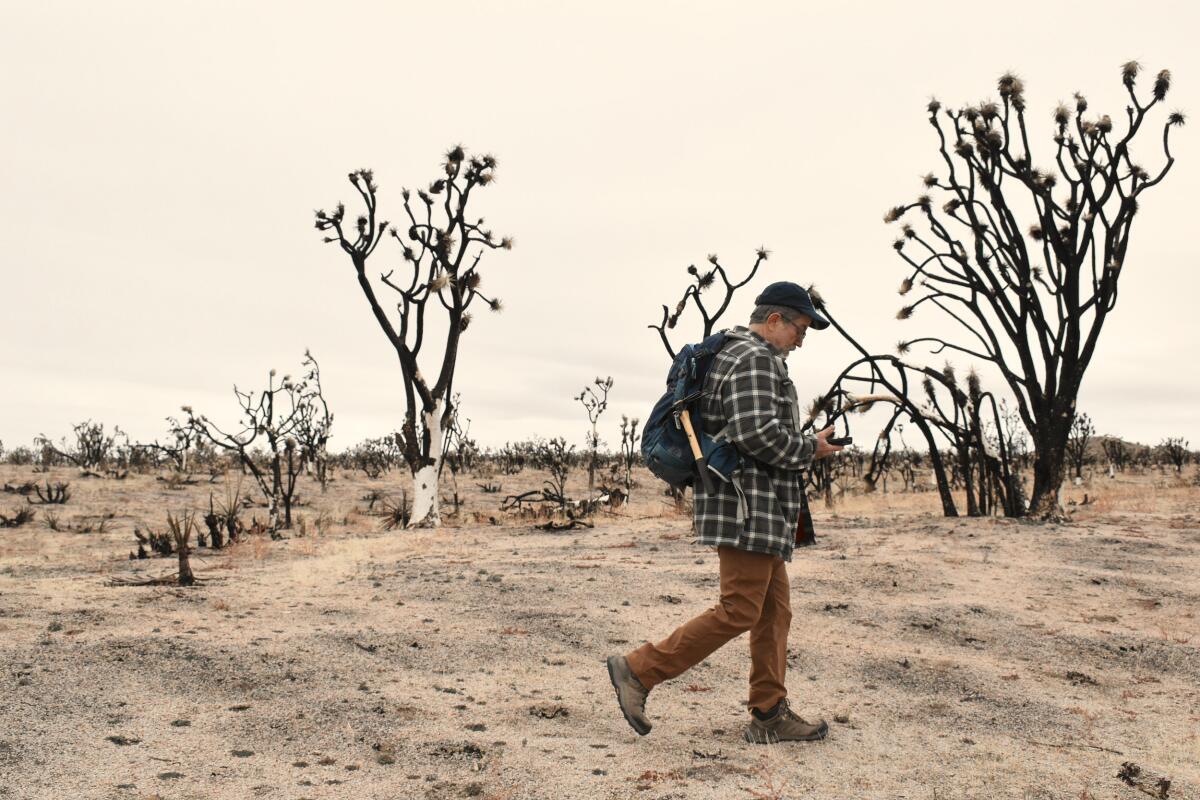
Cox, who is from Durango, Colo., saw the random pattern of destruction, with blackened trees next to unharmed ones, as a mosaic that will tell a story to future generations.
“For whatever whimsical reason, some of the plants are untouched,” Cox said.
Paul Bearce, a retired fire chief from Rio Rancho, N.M., said, “Just because we won’t see the fruits of our labor doesn’t mean my grandkids will not be able to enjoy the trees here.”
Chris Clarke, 61, of the nonprofit National Parks Conservation Assn. named one of the seedlings after his wife, Lara.
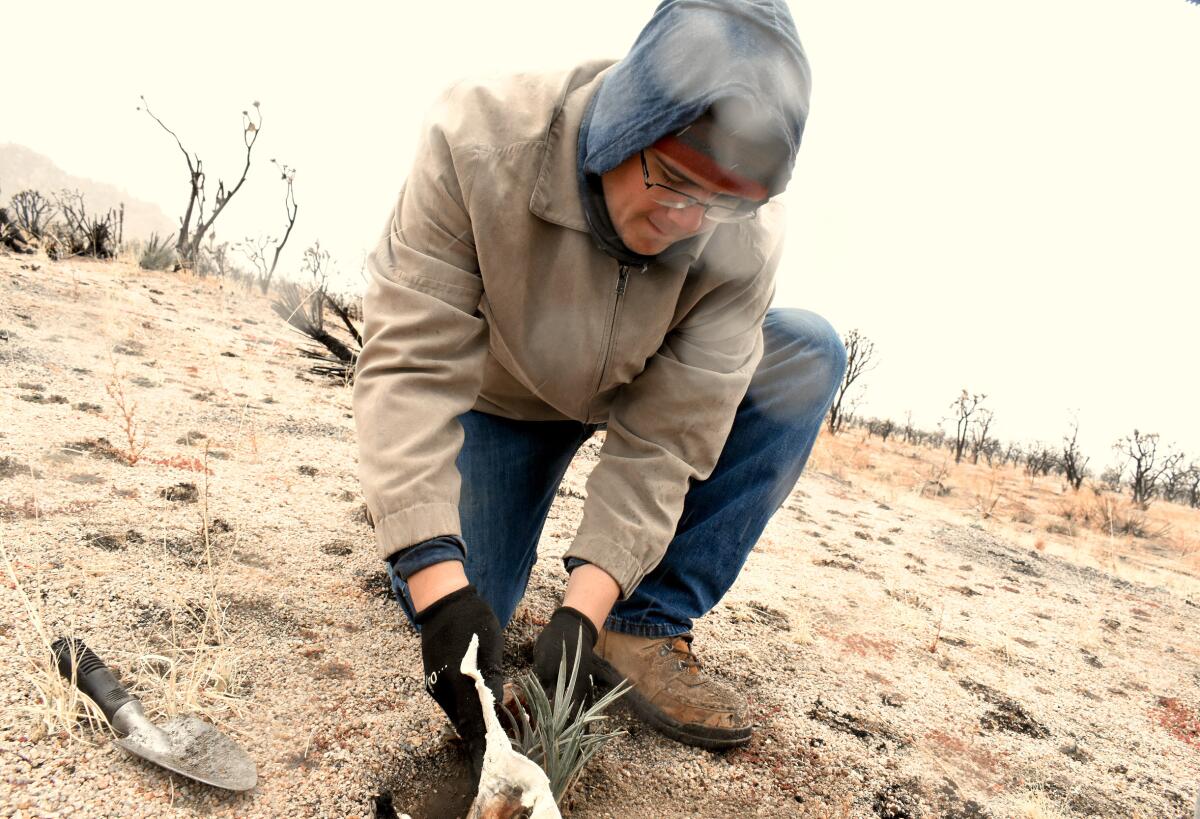
He has been retreating to Cima Dome since the 1990s, working through some difficult moments in his life amid the Joshua trees, rabbits and coyotes, he wrote in an emotional blog post.
“There were a couple of trees that I would camp near, and over the years I got to know them ... And I would talk to them,” Clarke said. “I recently went back, and now they’re gone. There is nothing there. They’re dead.”
Nurturing the infant trees makes Clarke feel like he’s doing something to help. But he knows there will likely be more fires in the future.
Anthea Raymond, 57, from Cypress Park, who leads tours along the Los Angeles River, said she felt hopeful and at peace after planting several seedlings.
She named one Chico, for a stubborn pack camel that was supposed to accompany the group but refused to leave base camp.
“It felt good that I could make a difference in a really small, tactile way,” she said.
Cummings, 55, of the Center for Biological Diversity named a seedling after his late dog, Trina.
“Hopefully I’ll live long enough, and those trees will live long enough when they’re taller than me three decades from now, and I can visit them,” he said.
Like a sign from nature, rain began to fall on the volunteers — and on the newly planted seedlings. Temperatures would soon drop, postponing more planting until the spring.
Watch L.A. Times Today at 7 p.m. on Spectrum News 1 on Channel 1 or live stream on the Spectrum News App. Palos Verdes Peninsula and Orange County viewers can watch on Cox Systems on channel 99.
More to Read
Sign up for Essential California
The most important California stories and recommendations in your inbox every morning.
You may occasionally receive promotional content from the Los Angeles Times.
